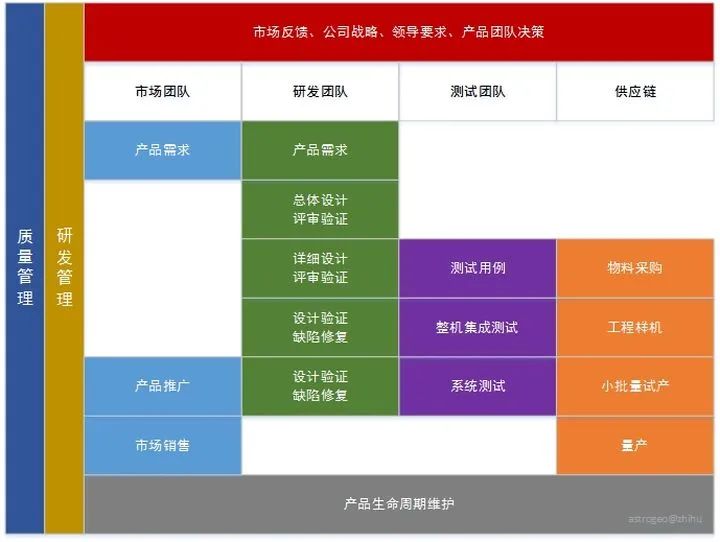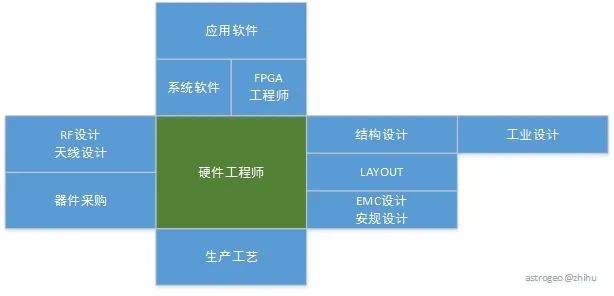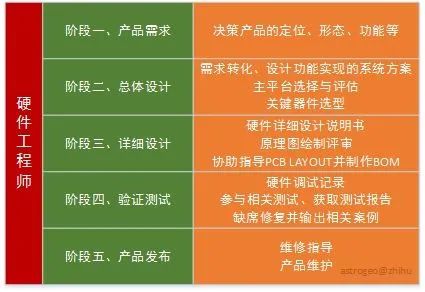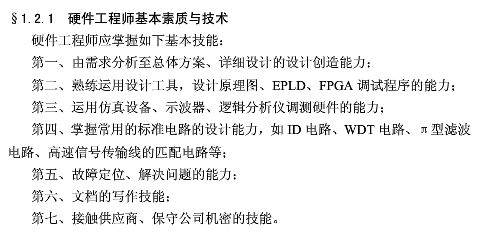What is Hardware
In a narrow sense, the software and hardware we usually refer to are in the field of electronics.
Software code is also written by people. The languages we are familiar with, such as C, C++, etc., are translated into assembly language by compilers, and then assembly language is translated into binary machine language by assemblers. Machine language controls the gate circuits to complete corresponding actions. Personally, I believe that without hardware, software has no meaning of existence; hardware is the foundation of everything, which shows how important hardware design is.
However, software and hardware have clear distinctions, at least the nature of the work is very different. According to industry descriptions, hardware belongs to the lower level (commonly referred to as low-level hardware), while software is called the upper level (software is further divided into: low-level drivers, upper-level business, and application layers, etc.). If one must give an example to illustrate software and hardware, the best example is a person; hardware refers to the human body, while software refers to human thoughts.
In fact, for those not in the electronics field, it is hard to understand how computers work, how hardware works, and how software works. Even if you know it’s all 0s and 1s, if you haven’t done related work, you won’t discover the magic within. You only need to know that software drives hardware to work; what drives it? It’s electrical signals!
The electrical signals received by the hardware are divided into 0 and 1. The response speed of hardware is very fast; how fast? For example, the commonly used serial port baud rate is 115200 bits per second, meaning 115200 0s or 1s in one second. An English letter is 8 bits (as seen in the ASCII table, which is learned in college), which means that in one second, 14400 letters can be printed. You can blink, and over ten thousand letters are produced. Of course, this is just a figurative example.
What is Hardware Design
Generally speaking, hardware design refers to circuit design. This statement is not problematic because all your work revolves around circuit design, and the ultimate goal is to produce an excellent circuit that meets various requirements and withstands various tests. However, what we actually require is a product, not just a single board.
There is a good article online that states: “Hardware design is based on the product manager’s requirements (PRS – Product Requirement Specification), under the requirements of COGS (Cost of Goods Sold), using currently mature chip solutions or technologies, to complete the hardware product within the specified time, and it must meet the following requirements:
-
PRS Function (Function)
-
Performance (Performance)
-
Power Supply Design (Power Supply)
-
Power Consumption (Power Consumption)
-
Thermal/Cooling (Thermal/Cooling)
-
Noise (Noise)
-
Signal Integrity (Signal Integrity)
-
EMC/EMI (Electromagnetic Radiation)
-
Safety (Safety)
-
Component Sourcing (Component Sourcing)
-
Reliability (Reliability)
-
Design for Test (DFT)
-
Design for Manufacture (DFM)
It can be seen that a successful hardware design mainly realizes the core functions as just a small part of all processes. When starting work, one might think that completing the circuit design of the board means 50% of the work is done, and that achieving the main functions of the PCB means 80% of the work is done. In reality, that’s not the case; even if the main functions of the PCB are achieved, it doesn’t even account for 30% of the work. Therefore, whether in terms of time or stages, the hardware design of a product is a long process.
Moreover, when you work on product hardware design in a company, you generally refer to mature solutions. The main functions of the core chip CPU ultimately rely on the chip manufacturers’ provided solution sets. Generally, to reduce risk, the reference designs of these solution sets are completed. Chip manufacturers also provide comprehensive materials, including device packaging, reference designs, simulation models, PCB references, etc. Today, as chip functions become increasingly complex, a single chip can easily have hundreds or thousands of pins. For a new project, there is no time to thoroughly understand each pin and its specific functions and electrical parameters, especially for high-speed designs like DDR3 interfaces and XAUI interfaces, etc. Generally, the reference designs provided by chip manufacturers are the best solutions they have developed, verified, and tested. In many cases, you must follow the reference design; otherwise, there may be hardware issues, typically signal integrity or EMC issues.
Some might argue that hardware circuit design can’t be called design; it’s just copying mature circuits. With chip manufacturers providing increasingly comprehensive services, and the technical accumulation within companies, hardware design engineers can seemingly perform circuit design without much thought. It appears that the value of hardware engineers (HWE – Hardware Engineer) is diminishing, as the core functions or technologies of a product generally reside in ICs or FPGAs, and HWE usually lacks the capability to perform core logic design (IC design). If this logic follows, software design cannot be called design either, as it’s just copying mature code. How many software developers do not migrate others’ code? To dig deeper, how many software engineers can freely modify uboot or kernel without searching for C language syntax or migrating business programs or seeking technical support from chip manufacturers? Even if everything is mature, I haven’t found any project that is completed quickly. The same set of circuits and codes may work for mature products, but why do new products have issues? Ultimately, it is still hardware design that resolves these problems.
Regarding the above issues, I have also been confused, always feeling that hardware design is not challenging; isn’t it just about copying reference designs, like assembling a computer or a single board? Of course, as project experience increases, especially in my current role in hardware system-level design, I realize that I initially considered issues from a schematic design engineer’s perspective, which was always very one-sided. As mentioned earlier, a successful hardware design sees Function as just a small part; regarding other factors and capabilities, an HWE’s ability depends on how many factors they can consider and how deeply they can delve into them, the more they can become an excellent HWE engineer.
Therefore, HWE relies on experience. For companies, cultivating an HWE is costly. Hardware does not allow for quick fixes like software code; if a hardware design is wrong, it may require starting over, potentially delaying the entire project cycle by three weeks or even more than a month. For example, a recent issue encountered was with a sensor producing poor images with many bright spots; the hardware circuit could not be jump-wired, which was related to layout and routing, requiring a board modification.
A point to clarify is that anyone can accomplish tasks without understanding everything, but there will be a developmental ceiling for individuals. In hardware, it’s like a reference circuit; you can use it even if you don’t understand how it works. In software, it’s like uboot and kernel; you can use them even if you don’t understand them. But once you understand, it’s different. When it comes to hardware design, everyone thinks it’s just circuit design, which seems simple and not challenging, but in reality, it’s not; the lower you go, the more challenging it becomes, the greater the responsibility, and the more inter-departmental communication is required. The more you understand, the easier it is to learn, and the further you can go.
What is Hardware Circuit Design
Hardware circuit design is about designing circuits, being able to proficiently use EDA software like Cadence to draw circuits and view PCBs. In hardware design, circuit design is the most important duty of an HWE. Circuit design tests an HWE’s foundational design skills, which include understanding and flexibly applying various hardware components, such as:
-
CPU
-
Resistors, capacitors, inductors
-
Diodes, transistors
-
Protection devices, interface devices
-
Logic chips, logic functions
-
Small chips
-
Power supplies
The aforementioned discussions regarding hardware design-related matters should all be considered during the design phase. Currently, various processes in large companies ensure inter-departmental collaboration during the design phase, which is quite good.
Every company will have its own hardware circuit design specifications, which need to be carefully reviewed and applied in practice. Hardware circuit design mainly focuses on circuit design, involving many aspects. There will be a separate chapter discussing the design of circuit modules later. Hardware circuit design requires sufficient experience and theoretical knowledge.
Hardware Design Development Process
After the hardware department development process is specified, personnel in the hardware department must strictly follow the development process to complete their work. The hardware department development process is mainly divided into the following steps.
-
Market Research
For the upcoming project, market research needs to be conducted.
-
Project Initiation
After completing the market research, project initiation work is needed.
-
Overall Hardware Design
After the project is initiated, overall hardware design is required.
-
Experimentation of Core Components and Detailed Design of Submodules
After completing the overall design, experiments on core components must be conducted, and submodule design plans initiated.
-
Circuit, Program, and Enclosure Design
After completing the detailed design of core components and submodules, circuit, program, and enclosure designs will be conducted according to the project specifications.
-
System Integration Testing
After debugging each submodule, system integration testing can be performed.
-
Internal Review, Project Acceptance
After completing system integration testing, the project can undergo internal review and acceptance.
What is a Hardware Engineer
Job Responsibilities
Hardware engineers are responsible for the hardware design of the entire product.
The R&D process of a hardware product is illustrated below:

All positions in the company are equally important. Although the importance of each team is the same, the position of the R&D team in product development should be more central. R&D personnel can transition to roles in marketing, testing, supply chain, or quality management, but it is challenging for those in marketing and other roles to switch to R&D. First, R&D has a high threshold, and second, R&D work has a broad scope. Among the entire R&D team, hardware engineers play a leading role.
Generally, when we talk about R&D, it is not limited to software and hardware but encompasses the entire project team, which includes product managers from almost all departments.
Hardware engineers are an important member of the R&D team, and the R&D team for hardware products can be illustrated as follows:

Of course, the above diagram does not fully represent the situation; for instance, thermal design is also a very important member. However, it should be noted that in the entire project R&D team, there are two people who interact with everyone: one is the project manager, and the other is the hardware engineer. Hardware engineers need to communicate and coordinate with various R&D personnel, which requires them to have a wide range of knowledge and strong coordination skills.
The primary responsibilities of hardware engineers are illustrated below:

Hardware engineers can be roughly divided into the following four stages:
-
Junior Hardware Engineer
Complete parts of stages three and four under the guidance of others; this is typically achievable for fresh graduates within three months of employment.
-
Regular Hardware Engineer
Independently complete the work of stages three and four, usually achievable within 1 to 2 years.
-
Senior Hardware Engineer
Lead the completion of stages three and four, participate in the overall design work of stage two.
-
Expert Hardware Engineer
Lead the completion of stages one and two.
As a hardware engineer, one is responsible for the entire product development process. Therefore, precise control of each time period is essential. Projects have project cycles; although the project manager oversees timing, it is the hardware engineer who handles the specific operations.
Skills Required
The goal of hardware engineers is zero defects in products.
In this process, one needs to design circuits, debug, and communicate across departments, requiring improvement in various abilities.
Regarding the basic qualities and skills of hardware engineers, here is the positioning from the Huawei hardware engineer manual:

Self-Cultivation
Finally, let’s discuss self-cultivation for hardware engineers.
-
Communication Skills Must be logical; thoughts should be comprehensive; this way, communication with personnel from other departments can be effective. Poor communication can lead to conflicts, such asthis article:Those in Hardware Have Conflicts with Everyone!!
-
Gentle Personality Since you will be communicating with all departments, don’t have a stern face or use an authoritative tone. An extreme personality can lead to conflicts!
-
Humble and Cautious Even if you do not adopt others’ opinions, you should listen to them and then express your insights and reasons; stubbornness can lead to conflicts!
-
Meticulous Designing circuits requires careful attention; debugging must be thorough because if a problem arises, the responsibility falls solely on you!
-
Patience Whether communicating, debugging, or checking circuits, one must have patience!
-
Ask When Unsure If something is unclear, ask. Given the short product development time, there isn’t much time to research!
-
Responsibility Be responsible for the circuit, for the product, and for bugs!
-
Distinguish Priorities When problems arise, first think about how to solve the issue rather than assigning blame!
-
Willing to Learn Be helpful to others, eager to learn, and possess solid experiential and theoretical knowledge!
